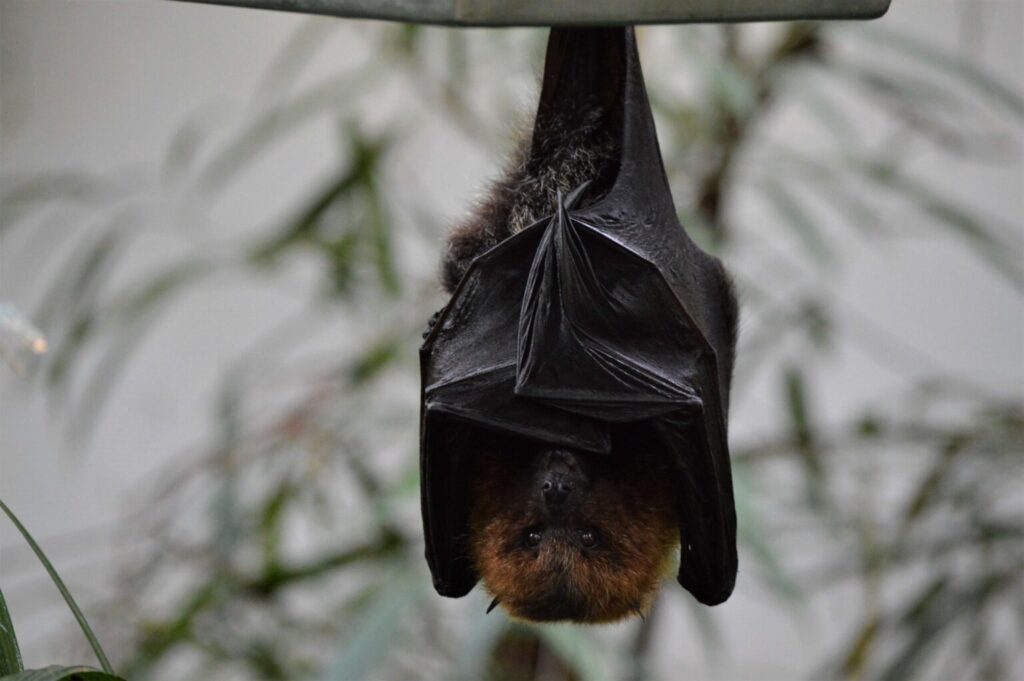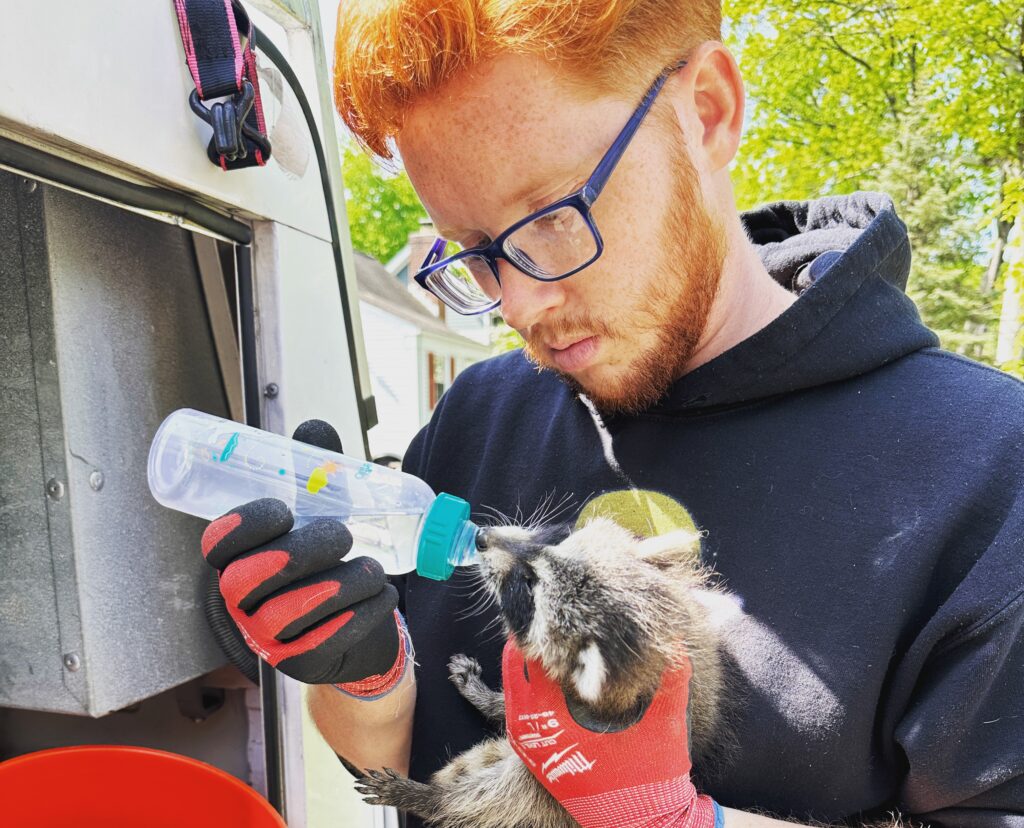Bats are a crucial part of our ecosystem, playing a significant role in controlling insect populations. However, when they find their way into your home, they can quickly become more of a nuisance than a benefit. Bat removal is essential for maintaining a safe and healthy living environment, especially when these creatures decide to take up residence in your attic or walls. The presence of bats can lead to a host of problems, including noise disturbances, unpleasant odors, and the potential spread of diseases such as rabies.
Understanding how to effectively and humanely remove bats from your home is crucial for any homeowner dealing with this issue. This guide will provide you with practical tips for bat removal, helping you address the problem while ensuring the safety of both your family and the bats. Whether you’ve noticed a single bat or suspect a larger infestation, these strategies will help you regain control of your living space.
Key Takeaways
- Seal all entry points to prevent bats from entering your home.
- Use bat exclusion devices for humane and effective removal.
- Eliminate attractants like standing water and excess insects.
- Install bat houses to provide alternative roosting options.
- Avoid using poison; opt for humane removal methods instead.
1. Seal Entry Points
One of the most effective ways to address bat removal is by sealing all potential entry points around your home. Bats are remarkably agile creatures, capable of squeezing through gaps as small as 1/2 inch. This makes it essential to thoroughly inspect your home’s exterior, paying special attention to areas where bats are likely to enter, such as vents, chimneys, and gaps in the roofline. Using materials like caulk, steel wool, or wire mesh can effectively close off these entryways, preventing bats from getting inside.
It’s important to approach this task with diligence, as even a small oversight can allow bats to regain access to your home. By eliminating these entry points, you not only stop bats from entering but also make the process of bat removal more manageable. Ensuring your home is properly sealed is a proactive step in safeguarding your living space from these unwanted guests while protecting your property from the damage they can cause.
2. Use Bat Exclusion Devices
Bat exclusion devices are a humane and effective method for bat removal, allowing these creatures to leave your home without re-entering. These devices are typically installed at primary entry points where bats are known to access your home, such as gaps in the roof or attic vents. The principle behind bat exclusion is simple: the device allows bats to exit but creates a one-way barrier that prevents them from coming back inside. This method is particularly useful because it doesn’t harm the bats, aligning with both ethical considerations and legal protections that many bat species enjoy. Once the bats have exited through the exclusion device, it’s crucial to ensure that all other potential entry points have been sealed.
This prevents new colonies from taking up residence in your home. By using bat exclusion devices as part of your bat removal strategy, you can effectively rid your home of bats while ensuring they are not harmed in the process. This approach not only resolves the immediate issue but also provides long-term protection against future infestations.

3. Eliminate Attractants
A key aspect of successful bat removal is eliminating the factors that attract bats to your property in the first place. Bats are often drawn to areas that offer a reliable food source, such as insects, as well as water sources where they can drink and roost. By reducing these attractants, you can make your home less appealing to bats, which in turn makes the removal process more effective. Start by addressing any issues with standing water around your property. This includes fixing leaky faucets, removing birdbaths, and ensuring proper drainage in your yard.
Additionally, installing insect screens on windows and doors can help reduce the number of insects in and around your home, depriving bats of their primary food source. Proper outdoor lighting can also play a role, as bright lights tend to repel insects, further reducing the food supply for bats. By proactively eliminating these attractants, you can significantly reduce the likelihood of bats choosing your home as their roosting spot, making bat removal easier and more successful in the long run.
4. Install Bat Houses
Installing bat houses is a strategic approach to bat removal that not only addresses the issue of bats in your home but also provides them with a suitable alternative roosting spot. Bats play an essential role in controlling insect populations, and by offering them a designated place to live, you can encourage them to relocate from your attic or walls to a more appropriate environment. Bat houses should be installed in areas away from your home, preferably in locations where bats are likely to find them attractive, such as near water sources or large trees.
The bat house should be placed at least 10-15 feet above the ground, in a spot that receives ample sunlight during the day. This ensures that the interior of the bat house remains warm, making it an ideal habitat for bats. By providing an alternative roost, you not only facilitate the bat removal process but also contribute to bat conservation efforts. This method allows you to coexist with these beneficial creatures without having them inside your home, creating a win-win situation for both you and the bats.
5. Use Natural Repellents
Using natural repellents is a gentle yet effective method for bat removal that ensures these creatures are deterred without causing them harm. Bats are highly sensitive to certain smells, which makes natural repellents an ideal solution for homeowners looking to keep bats out of their living spaces. Scents such as peppermint, eucalyptus, cinnamon, and even cloves have been found to be particularly effective in repelling bats. To implement this method, you can create sachets filled with these natural ingredients and place them near entry points where bats are known to enter your home, such as windows, attics, and chimneys.
Alternatively, you can use essential oils derived from these plants, applying them to cotton balls and placing them in strategic locations around your home. These natural repellents create an environment that is unpleasant for bats, encouraging them to leave and seek out alternative roosting sites. By incorporating natural repellents into your bat removal strategy, you can achieve a humane and eco-friendly solution that keeps your home bat-free without the need for harsh chemicals or inhumane practices. This approach not only protects your home but also respects the role that bats play in the ecosystem, making it a responsible choice for any homeowner.
6. Maintain Proper Lighting
Proper lighting is an often overlooked yet effective strategy in bat removal, as it can make your home less appealing to these nocturnal creatures. Bats are naturally drawn to dark, quiet spaces where they can roost undisturbed, and bright lights can disrupt their natural behavior. By strategically placing lights around your home, especially near common entry points such as attic vents, roof eaves, and chimneys, you can create an environment that discourages bats from taking up residence. Motion-activated lights are particularly useful, as they not only illuminate dark areas but also startle bats when triggered, making the area feel unsafe for them.
Additionally, outdoor lighting that reduces insect activity can indirectly contribute to bat removal, as fewer insects around your home means less food for bats. However, it’s important to balance lighting with energy efficiency and ensure that lights are not disturbing your home environment or the natural behaviors of other wildlife. By maintaining proper lighting as part of your bat removal plan, you can effectively deter bats from roosting in and around your home, creating a less inviting space for them and ensuring your living areas remain bat-free.
7. Trim Overhanging Branches
Trimming overhanging branches is a crucial step in bat removal that can significantly reduce the likelihood of bats accessing your home. Bats often use tree branches and other vegetation as launchpads to reach rooftops and other high areas where they might roost. By maintaining a safe distance between tree branches and your home, you minimize their ability to gain access to potential entry points. Regularly pruning trees around your property not only enhances the aesthetic appeal of your yard but also creates a barrier that bats find difficult to overcome.
Focus on branches that are close to or directly above your roofline, as these are the most likely to be used by bats. Additionally, ensure that no branches are touching your home’s exterior, as this provides a direct pathway for bats to enter through gaps or openings. By keeping these branches well-trimmed, you make your home less accessible to bats and help to prevent future infestations. This proactive measure supports your overall bat removal efforts, contributing to a safer and bat-free living environment.
8. Avoid Using Poison
When dealing with bat removal, it’s essential to avoid using poison as a solution. While it might seem like a quick fix, poison poses significant risks and is not recommended for bat control. First and foremost, poisoning bats is inhumane and can lead to prolonged suffering. Additionally, poisoned bats often die in hard-to-reach areas within your home, such as wall cavities or attics, leading to unpleasant odors and potential health hazards. Decomposing bats can attract other pests and create an unhealthy living environment. Moreover, many bat species are protected by law, and using poison can result in legal consequences.
Instead of resorting to poison, focus on humane and effective methods of bat removal, such as sealing entry points, using bat exclusion devices, and employing natural repellents. These approaches ensure that bats are removed safely and efficiently without causing unnecessary harm or creating further issues within your home. By choosing ethical solutions, you contribute to a more effective bat removal process while maintaining a safe and healthy environment.
9. Schedule Professional Inspections
Scheduling professional inspections is a vital component of an effective bat removal strategy. While DIY methods can address some aspects of bat control, professional inspections offer a comprehensive approach to identifying and resolving bat issues. Experts have the knowledge and tools to thoroughly assess your home for signs of bat activity, including hidden entry points and nesting areas that you might overlook. Their experience allows them to evaluate the extent of the infestation, recommend targeted removal methods, and implement solutions tailored to your specific situation.
A professional inspection can also help in identifying potential structural vulnerabilities that may need repair to prevent future infestations. By investing in professional services, you ensure that bat removal is handled safely and efficiently, minimizing the risk of further damage to your home and reducing the likelihood of recurring problems. Regular inspections by trained professionals are essential for maintaining a bat-free environment and ensuring that your home remains secure from these unwanted guests.
10. Know When to Call a Professional
Knowing when to call a professional is crucial for effective bat removal, especially when dealing with a significant infestation or complex situations. While some minor bat issues can be managed with DIY methods, there are circumstances where professional intervention is necessary. If you notice multiple bats roosting in your home or hear persistent noises coming from the attic or walls, it’s a strong indication that the problem is beyond simple remedies.
If you encounter bats frequently or suspect that they might be entering through hidden or hard-to-reach areas, professional expertise is essential. Professionals are equipped with specialized tools and techniques to handle large infestations safely and efficiently. They also have the knowledge to address potential structural issues that could be contributing to the problem. By seeking professional help, you ensure that bat removal is done comprehensively and effectively, protecting your home from damage and ensuring the well-being of all its occupants.
FAQs
How do I know if I have a bat infestation?
Signs of a bat infestation include hearing scratching or squeaking noises from the attic or walls, finding bat droppings or guano around entry points, and noticing a strong, musty odor. You might also see bats flying near your home during dusk or nighttime. If you suspect a bat infestation, it’s essential to conduct a thorough inspection or contact a professional to assess the situation.
Can bats cause damage to my home?
Yes, bats can cause significant damage to your home. Their droppings, or guano, can accumulate and create unsightly stains, unpleasant odors, and potential health hazards due to the risk of disease. Bats can also damage insulation, wiring, and structural elements as they enter and exit through small openings, leading to costly repairs.
Are bat exclusion devices humane?
Yes, bat exclusion devices are a humane method of bat removal. These devices allow bats to exit your home but prevent them from re-entering. They are designed to ensure that the bats can leave without being harmed, aligning with ethical considerations and legal protections for many bat species.
What should I do if I find a bat inside my home?
If you find a bat inside your home, it’s important to stay calm and avoid direct contact. Close the doors to the room where the bat is located and open windows to provide an exit route. If the bat doesn’t leave on its own, contact a professional bat removal service to safely handle the situation and ensure the bat is removed without harm.
How can I prevent bats from returning after removal?
To prevent bats from returning, it’s crucial to seal all potential entry points in your home, such as gaps in the roofline, vents, and chimneys. Additionally, maintaining proper lighting around your home, using natural repellents, and installing bat houses in nearby areas can deter bats from finding your home an attractive roosting spot. Regular inspections and maintenance can also help ensure that any new entry points are promptly addressed.
Conclusion
Effective bat removal is essential for maintaining a safe and comfortable living environment. By implementing strategies such as sealing entry points, using bat exclusion devices, and eliminating attractants, you can significantly reduce the likelihood of bats finding their way into your home. Additionally, installing bat houses, using natural repellents, and maintaining proper lighting are proactive measures that further discourage these creatures from roosting nearby.
Trimming overhanging branches and avoiding the use of poison are also critical steps in ensuring a humane and effective bat removal process. Scheduling regular professional inspections and knowing when to call in experts can make a significant difference in managing bat issues comprehensively. If you’re dealing with a bat infestation and need expert assistance, don’t hesitate to reach out. Call Kritter Catchers now at (973) 747-5455 to get the professional help you need and ensure your home remains bat-free and protected.


